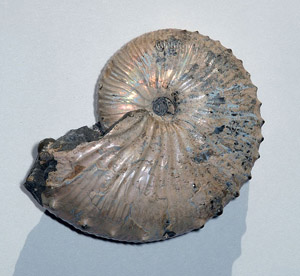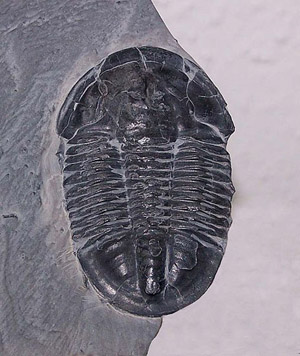Fossils and Relative Dating
Studying fossils is the best way for us to understand the evolutionary relationships between species. Fossils, have left some trace of itself in rock, such as bones, shells, or footprints even though they lived more than 10,000 years ago. Only a very small fraction of the millions of species on Earth are found in the fossil record. The fossils that we do find are a valuable tool in deciphering the mysteries of geologic history.
Index fossils

The diagram shows range in time during which certain organisms lived from the bottom where they first appear to the top where they become extinct. The trilobite on the far left was relatively short-lived compared to the mollusk-shell organism directly to the right of it. These time spans represent years during which the species was found on Earth not the life expectancy of a single organism. Dinosaurs were on Earth for about 180 million years before they became extinct.
Notice that fossils overlap in the times they lived. This makes it difficult to assign relative ages to rocks. In this case, scientists need a reference point to refer to. That’s where index fossils come in. An index fossil is a fossil of a species that had a relatively short life span. The trilobite on the far left is a better indicator of relative age because it only lived in a definite time period (period B); but the other species spanned many time periods. The best index fossils were short-lived, easy to identify at the species level, and had a broad geographic distribution.
Common Index Fossils
| Ammonite |  |
Ammonites are by far the most useful of index fossils. They were free-swimming marine animals that lived in ancient seas. It is often very easy to link an ammonite fossil in a rock to a given period of time in geologic history. |
| Trilobites |  |
These are trilobites, another marine animal that lived in ancient seas. Trilobites are good index fossils because various forms of them were relatively short-lived and they are easily recognized. Trilobites were arthropods and had bodies with three segments. After they first appeared in the fossil record, they rapidly diversified and look a little different at various times in the fossil record. Because of this, you can match the unique characteristics of a trilobite fossil to a known time in history. |
| Brachiopod |  |
This organism is an example of a brachiopod. The particular brachiopod shown here is about 480 million years old. It is also a good index fossil because it is easily recognized by its shape and was short-lived. Like trilobites, brachiopods evolved quickly, so unique forms are found in each major chunk of geologic time, making it easy for us to match brachiopod shape to a time in history. |